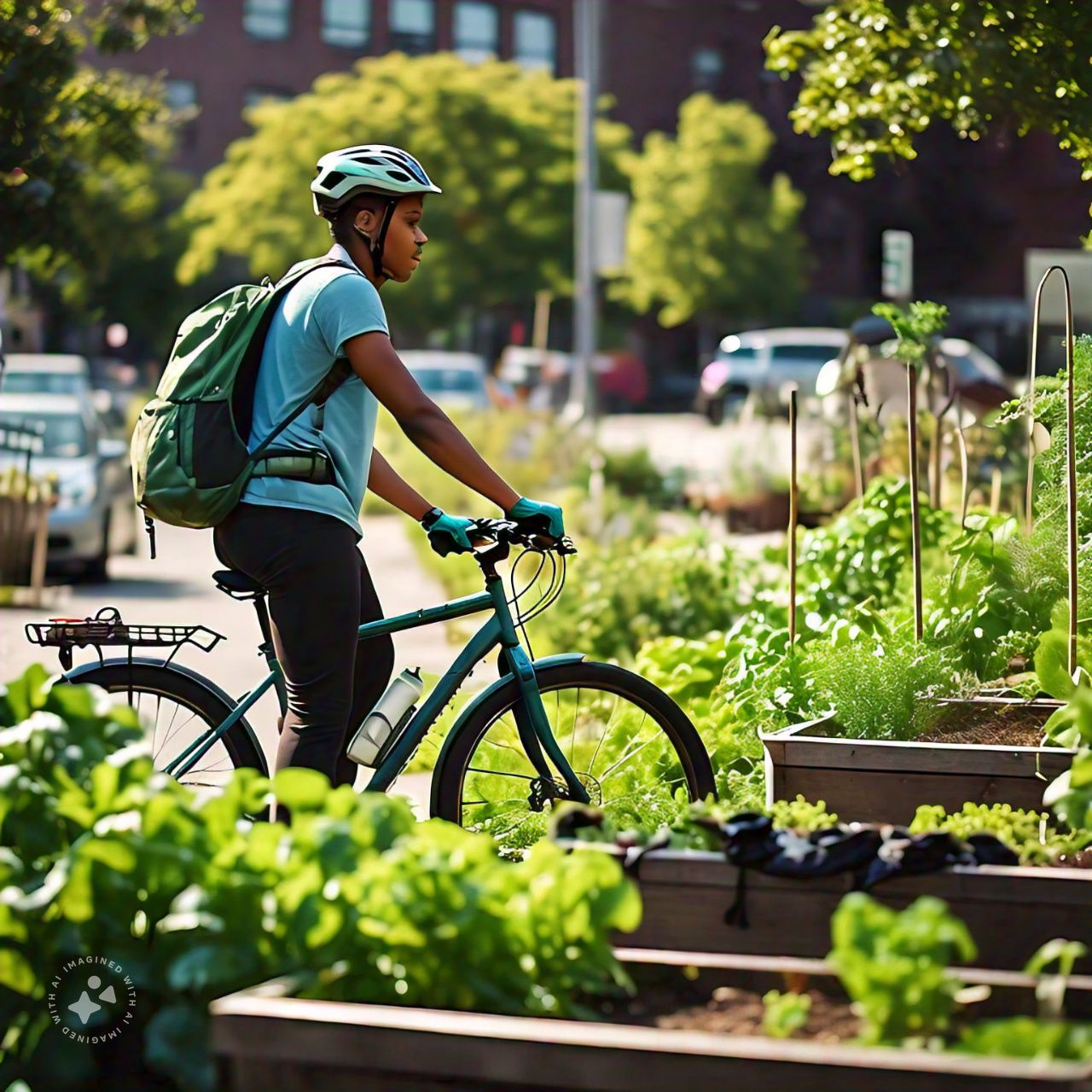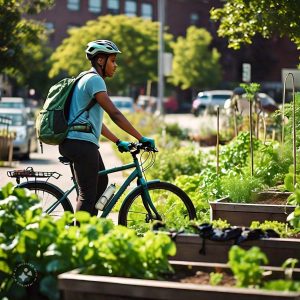Introduction
Climate change has become one of the defining challenges of our time, affecting ecosystems, economies, and communities worldwide. As temperatures rise, weather patterns shift, and natural disasters become more frequent, the urgency for sustainable solutions grows. This article explores the interplay between climate change and sustainability, emphasizing the need for integrated approaches to ensure a livable planet for future generations.
1. Understanding Climate Change
Climate change refers to long-term alterations in temperature, precipitation, and other atmospheric conditions on Earth. Driven primarily by human activities—such as burning fossil fuels, deforestation, and industrial processes—these changes have profound impacts on the planet’s ecosystems and human societies.
The Greenhouse Effect
The greenhouse effect is a natural process that warms the Earth’s surface. It occurs when the sun’s energy reaches the Earth, and some of this energy is reflected back to space while the rest is absorbed, warming the planet. Greenhouse gases (GHGs) like carbon dioxide (CO2), methane (CH4), and nitrous oxide (N2O) trap heat in the atmosphere. While this effect is crucial for life on Earth, human activities have increased the concentration of these gases, leading to enhanced greenhouse effects and global warming.
Current Climate Trends
- Rising Temperatures: Global temperatures have risen by about 1.2 degrees Celsius since the late 19th century, with projections indicating a potential increase of 2 degrees Celsius or more by the end of this century.
- Melting Ice Caps: Glaciers and polar ice caps are melting at an alarming rate, contributing to rising sea levels that threaten coastal communities.
- Extreme Weather Events: The frequency and intensity of hurricanes, droughts, floods, and wildfires have increased, causing significant economic and human losses.
2. The Concept of Sustainability
Sustainability is a broad term that encompasses practices and strategies aimed at meeting the needs of the present without compromising the ability of future generations to meet their own needs. It integrates environmental health, economic vitality, and social equity.
Dimensions of Sustainability
- Environmental Sustainability: This aspect focuses on conserving natural resources and reducing pollution to maintain ecosystem balance. Practices include renewable energy adoption, waste reduction, and biodiversity conservation.
- Economic Sustainability: Economic practices should support long-term growth without depleting resources or harming the environment. This can be achieved through sustainable business practices, green technologies, and ethical consumption.
- Social Sustainability: Ensuring social equity, cultural diversity, and community well-being is essential. This includes promoting fair labor practices, community engagement, and access to basic needs like education and healthcare.

3. The Interconnection Between Climate Change and Sustainability
Climate change and sustainability are intricately linked. Addressing climate change effectively requires a shift toward sustainable practices across all sectors.
Sustainable Solutions to Combat Climate Change
- Renewable Energy: Transitioning from fossil fuels to renewable energy sources like solar, wind, and hydroelectric power can significantly reduce greenhouse gas emissions. Countries are investing in clean energy infrastructure, which not only decreases reliance on oil and coal but also creates jobs and stimulates economic growth.
- Sustainable Agriculture: Agriculture is a significant contributor to GHG emissions. Implementing sustainable farming practices—such as crop rotation, organic farming, and agroforestry—can enhance food security while mitigating climate change. These practices improve soil health, reduce chemical inputs, and increase biodiversity.
- Waste Management: Effective waste management practices, including recycling, composting, and reducing single-use plastics, can reduce landfill contributions and emissions from waste decomposition. Innovative approaches like circular economy models promote resource efficiency and sustainability.
- Conservation Efforts: Protecting natural habitats and biodiversity is essential for sustaining ecosystems. Conservation initiatives that protect forests, wetlands, and marine environments can enhance carbon sequestration and preserve essential ecological functions.
4. Challenges to Achieving Sustainability
While the need for sustainability is clear, several challenges hinder progress:
- Political Will: Lack of political commitment and policy frameworks can stymie sustainable initiatives. It requires robust governance structures and global cooperation to tackle climate change effectively.
- Economic Constraints: Transitioning to sustainable practices often requires significant upfront investments. Developing nations, in particular, may struggle to allocate resources for renewable energy or sustainable infrastructure.
- Public Awareness: Raising awareness about climate change and sustainability is crucial for mobilizing public support. Educational programs and campaigns can foster a culture of sustainability and encourage individual actions.
5. The Role of Individuals in Promoting Sustainability
Individual actions can collectively contribute to significant changes in sustainability. Here are some ways people can make a difference:
Sustainable Lifestyle Choices
- Reduce, Reuse, Recycle: Adopting the “3Rs” in daily life can minimize waste and reduce environmental impact. Opting for reusable products over single-use items is a practical step.
- Energy Efficiency: Simple changes, such as using energy-efficient appliances, LED lighting, and smart thermostats, can lower energy consumption and reduce carbon footprints.
- Sustainable Transportation: Using public transportation, carpooling, biking, or walking instead of driving can reduce emissions from vehicles. Choosing electric or hybrid vehicles also contributes to lower GHG emissions.
- Conscious Consumerism: Supporting brands that prioritize sustainability, ethical sourcing, and environmentally friendly practices empowers individuals to influence the market positively.
6. Community and Collective Action
While individual actions are essential, collective efforts at the community level can amplify the impact. Community engagement fosters collaboration and encourages broader initiatives.
Grassroots Movements
Grassroots organizations play a vital role in advocating for sustainable practices and influencing policy. These groups often mobilize communities to take action on local environmental issues, from clean-ups to tree-planting events.
Local Government Initiatives
Local governments can implement sustainability programs, such as promoting green infrastructure, investing in public transportation, and enhancing recycling efforts. Engaging residents in decision-making processes fosters a sense of ownership and accountability.
7. The Global Perspective on Climate Change and Sustainability
Addressing climate change is not solely a local or national issue; it is a global challenge requiring international cooperation and action.
Global Agreements
International agreements, such as the Paris Agreement, aim to unite countries in their efforts to mitigate climate change by limiting global warming to well below 2 degrees Celsius. These accords emphasize the importance of reducing GHG emissions and transitioning to sustainable practices worldwide.
Developing Nations and Climate Finance
Developing nations often bear the brunt of climate change impacts despite contributing the least to the problem. Climate finance mechanisms, including grants and loans, are crucial for supporting these countries in their efforts to build resilience and implement sustainable practices.

8. The Future of Climate Change and Sustainability
The path forward requires innovation, collaboration, and a commitment to sustainability at all levels of society.
Technological Innovations
Emerging technologies, such as carbon capture and storage, renewable energy advancements, and sustainable agriculture technologies, hold promise for addressing climate change. Investing in research and development is essential for fostering breakthroughs that can transform our approach to sustainability.
Educational Initiatives
Education plays a pivotal role in promoting sustainability. Integrating environmental education into school curricula and providing training programs for adults can enhance awareness and equip individuals with the knowledge to make informed decisions.
Policy Changes
Robust policies and regulations that support sustainable practices are necessary for driving systemic change. Governments must prioritize climate action and sustainability in their agendas, creating frameworks that incentivize sustainable behaviors in businesses and communities.
Conclusion
Climate change and sustainability are interlinked challenges that require urgent action and commitment. By understanding the complexities of climate change, embracing sustainable practices, and fostering collective efforts, individuals, communities, and nations can work towards a healthier planet. As we navigate the path to a greener future, every action counts—small or large. Together, we can build a more sustainable world for generations to come.
Final Thoughts
As we confront the realities of climate change, the time for action is now. Whether through individual lifestyle choices, community engagement, or global cooperation, everyone has a role to play. By championing sustainability, we can mitigate the impacts of climate change and create a more equitable and resilient future.


